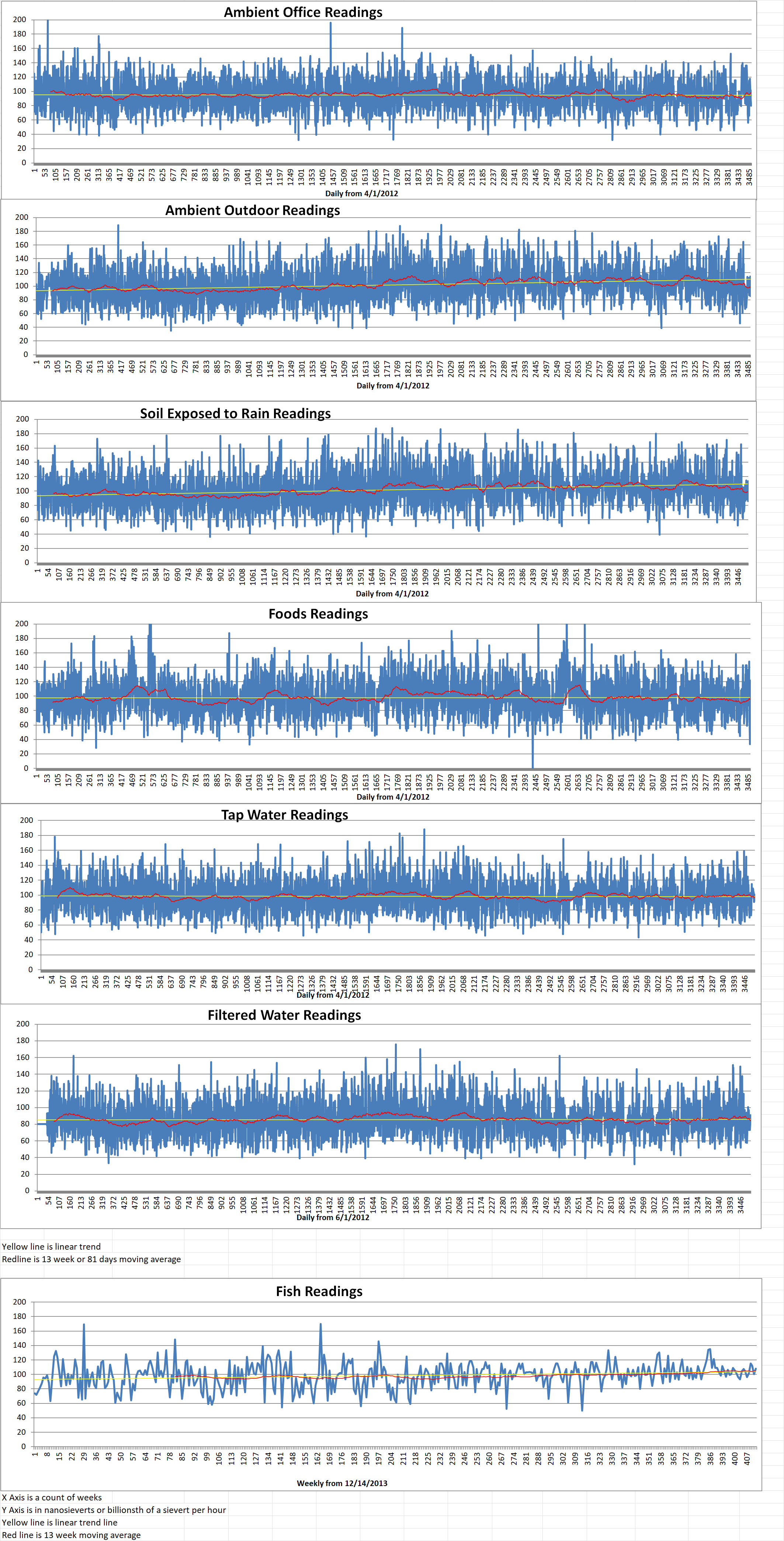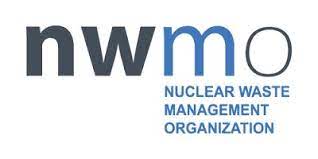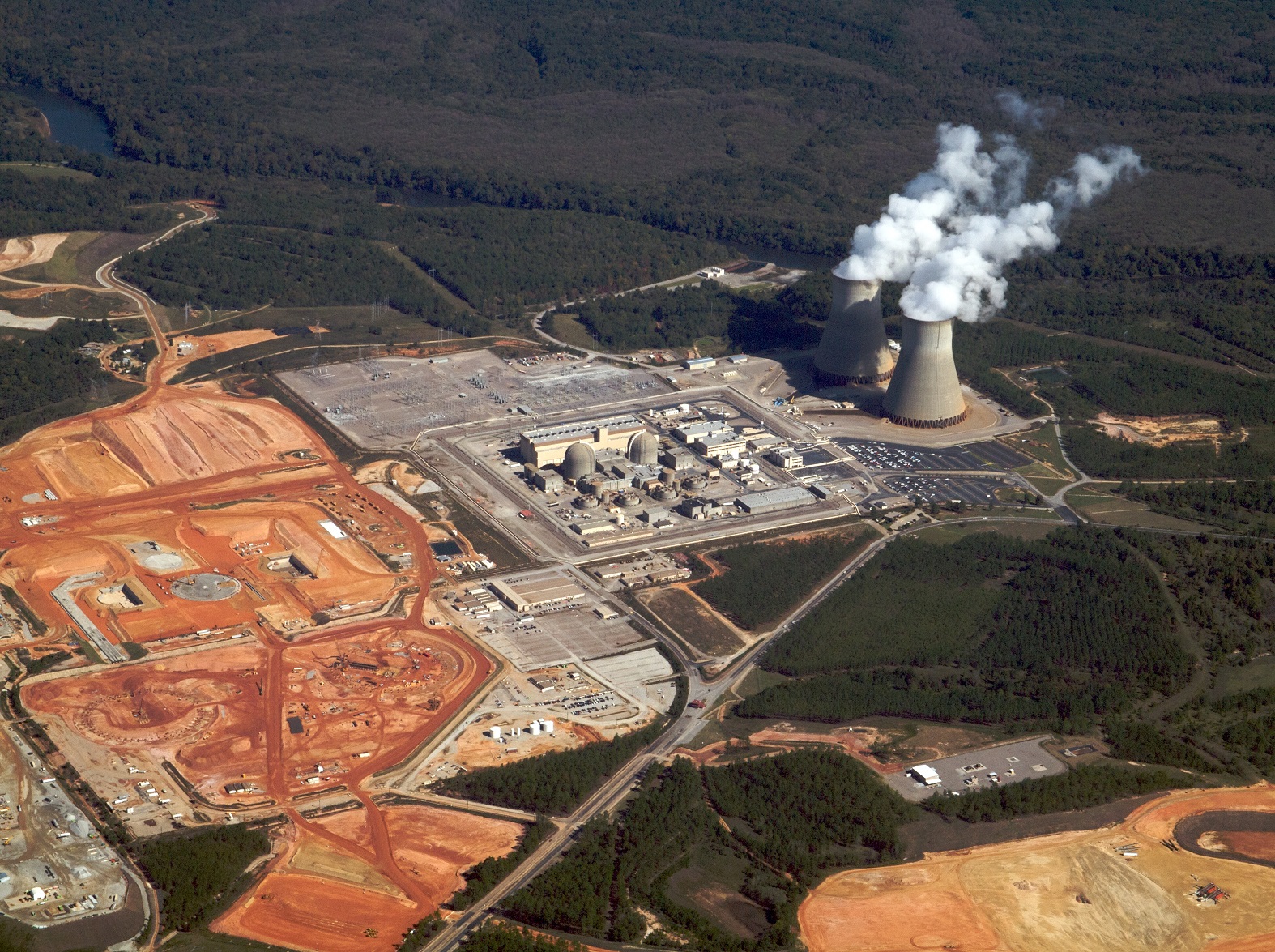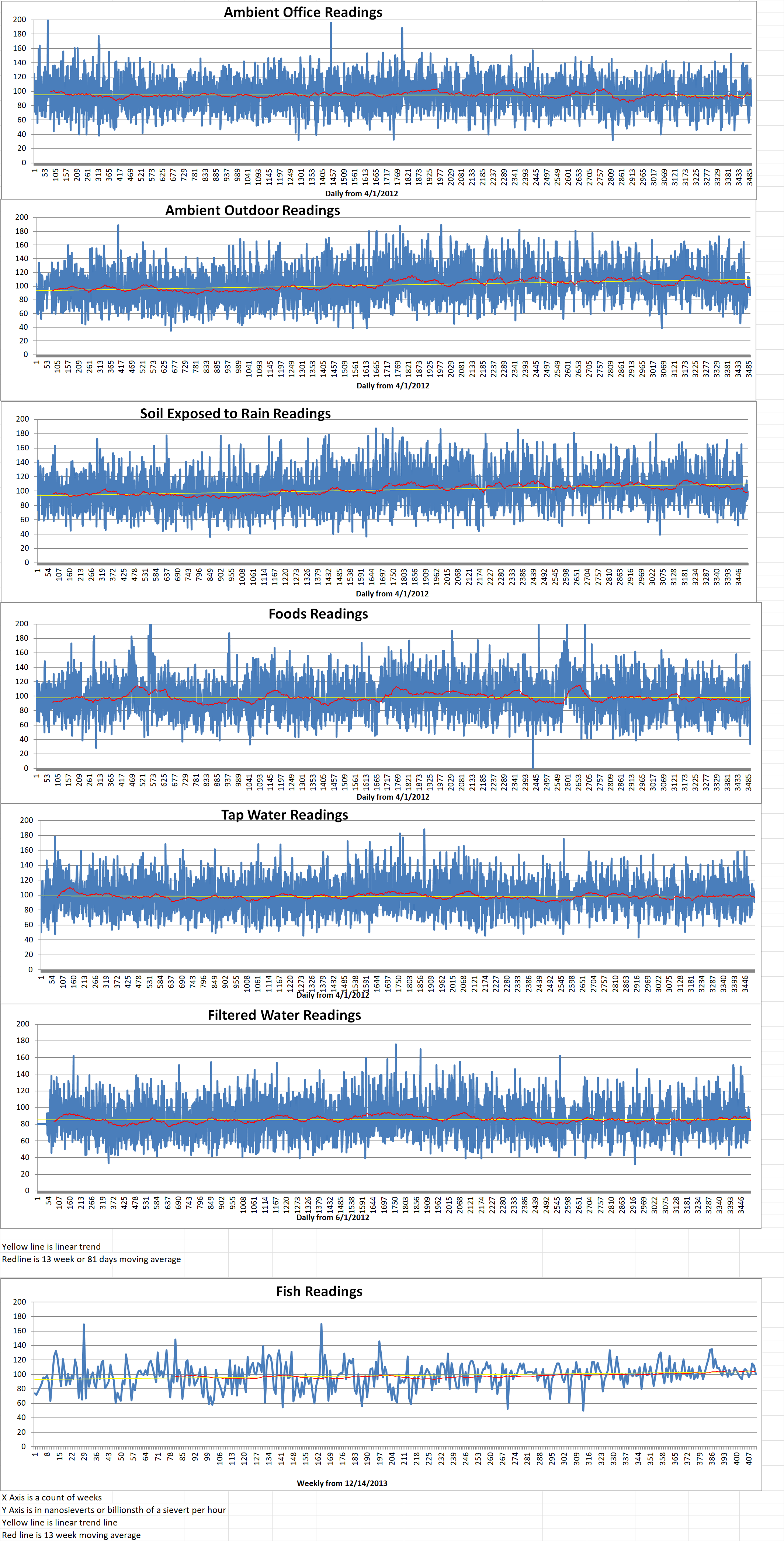Blog
-

Geiger Readings for Jan 23, 2022
Ambient office = 81 nanosieverts per hour
Ambient outside = 85 nanosieverts per hour
Soil exposed to rain water = 86 nanosieverts per hour
White onion from Central Market = 122 nanosieverts per hour
Tap water = 100 nanosieverts per hour
Filter water = 85 nanosieverts per hour
-
Nuclear News Roundup Jan 22, 2022
Bruce 7 prepares for isotope production world-nuclear-news.org
Citizens for Peace event marks nuclear ban treaty anniversary thelcn.com
WSU’s nuclear reactor pool gets a new coat news.wsu.edu
Hungarian nuclear degree’s first for IAEA review world-nuclear-news.org
-

Geiger Readings for Jan 22, 2022
Ambient office = 80 nanosieverts per hour
Ambient outside = 89 nanosieverts per hour
Soil exposed to rain water = 94 nanosieverts per hour
Tomato from Central Market = 34 nanosieverts per hour
Tap water = 101 nanosieverts per hour
Filter water = 79 nanosieverts per hour
Dover sole = 108 nanosieverts per hour
-

Radioactive Waste 839 – Plan In Development For Transportation Of Canadian Spent Nuclear Fuel
A proposed transportation plan by Canada’s nuclear industry calls for as many as thirty thousand shipments of highly radioactive spent nuclear fuel rods to travel through some of Ontario’s most densely populated communities over four decades. The planned transport of spent fuel would begin in the 2040s. Under the proposed plan created by the Nuclear Waste Management Organization (NWMO), spent fuel rods would be shipped by road and/or rail from reactor sites and interim storage facilities in Ontario, Quebec, Manitoba and New Brunswick. Their ultimate destination would be South Bruce or Ignace in Ontario.
Currently, researchers are studying the ancient bedrock below both communities to determine whether the geology is right for a deep geologic repository. The two-thousand-foot-deep repository will cost about twenty-three billion dollars. Canada could permanently dispose of its entire stockpile of nuclear waste for thousands of years in the repository. The selection of a site is expected in finalized by 2023.
Once the site is chosen, up to thirty thousand shipments of spent fuel will be shipped to the repository over four decades starting in the 2040s. This translates into an average of six hundred and forty shipments per year or almost two shipments a day. Radioactive cargo could potentially travel along rail routes, four hundred series highways or even city streets.
Spent nuclear fuel rods would be shipped in the Used Fuel Transportation Package (UFTP) which consists of three main components including the body, lid and impact limiter. The body and the lid are made from solid stainless steel. The walls are nearly a foot thick. Thirty-two bolts connect the lid to the body. The impact limiter has a redwood core encased in a stainless-steel skin. The body and lid provide containment, shielding and impact resistance. The impact limiter is designed to protect the body and lid closure in the event of an accident. The reusable package can transport one hundred ninety-two fuel rod bundles (about two modules). The total weight of a full container is around thirty-five tons.
Caitlin Burley is the NWMO’s manager of transportation engagement. She says that “We’re confident we can safely transport used nuclear fuel.” She went on to say that the likelihood of an accidental radiation release, particularly in the event of a crash, while the waste is being transported through cities of some of the province’s most productive farmland depends largely on the safety of the containers in which the spent fuel rods are being transported.
Burley said that their containers have been extensively tested according to international standards. Tests included nuclear shipping containers being dropped, immersed in water, punctured, rammed with a locomotive or even burned with propane and jet fuel. Burley said that all of these tests have been used sequentially on the same container.
Burley said that in all the tests, the containers successfully shielded the outside environment from nuclear radiation. She noted that in almost sixty years of transporting spent nuclear fuel, there has never been an incident in which people or the environment have been harmed.
Transportation of spent nuclear fuel is regulated by Transport Canada and the Canada Nuclear Safety Commission. Final approval of the plan rests with the federal government. Shipments will also have to have security details. They will be monitored by satellite and in constant communication with a 24-hour command center to ensure that the spent fuel rods are not captured by criminals or terrorists. In the event that a crash does happen, the NWMO has developed a plan to deal with the situation. Burley said, “We will be prepared. We will have the equipment and the personnel in place to respond. Everyone will know what their job is.”
Bill Knoll is the president of South Bruce and vice-president of the citizens’ group Protecting Our Waterways — No Nuclear Waste. He said, “The plan is vague on details and is more of a plan for a plan. This is one of the issues we have with the NWMO. Information that should be easy to arrive at is always changing.”
NWMO said that the plan was vague because it is still in flux. They noted that the nuclear industry has not yet narrowed down whether the permanent location for Canada’s spent nuclear fuel would be South Bruce or Ignace. Burley said, “It’s not set in stone. It’s actually a living document that’s meant to advance conversations around transportation. We’re really interested in what people have to say so we can incorporate it into our planning.” -
Nuclear News Roundup Jan 21, 2022
North Korea fires cruise missiles amid tension over lifting nuclear moratorium reuters.com
OKG signs hydrogen supply contract world-nuclear-news.org
Lynchburg company begins $4.9M nuclear fuel production campaign wfxrtv.com
Test assembly of MBIR research reactor vessel carried out world-nuclear-news.org
-

Geiger Readings for Jan 21, 2022
Ambient office = 90 nanosieverts per hour
Ambient outside = 96 nanosieverts per hour
Soil exposed to rain water = 97 nanosieverts per hour
Romaine lettuce from Central Market = 67 nanosieverts per hour
Tap water = 93 nanosieverts per hour
Filter water = 83 nanosieverts per hour
-

Nuclear Reactors 991 – Small Modular Reactors Are Not Going To Save The Nuclear Industry – Part 2 of 2 Parts
Part 2 of 2 Parts (Please read Part 1 first)
Advocates of SMRs claim that they have a new strategy to lower costs of reactor construction in the long run. They say that the cause of rising costs and schedule delays is the size and complexity of large reactors and on the difficulty of managing the large amount of work that needs to be executed on-site. SMRs are expected to be cheaper because they will utilize production line-made modules. Much less work will be required at the construction site.
These arguments have superficial attraction but do not stand up to examination. The main strategy for combating nuclear power’s historic lack of competitiveness has been to build ever-larger reactors. The reasoning is that the expenses associated with constructing and operating a reactor should not increase in direct proportion to the power generated. SMRs cannot escape this economic logic. The scale economies of conventional reactors that will be lost cannot be compensated by factory manufacturing of parts for SMRs. SMRs will cost more than large reactors for each megawatt of generation capacity.
Previous experience with reactor construction suggests that factory manufacturing of modules will not be a panacea. The AP1000 design used at the plants in Georgia and South Carolina relied heavily on using modular factory-made components. However, that reliance did not prevent the large cost and time overruns as well as quality control problems that have caused problems for these projects.
The economics of SMRs will only be revealed when large numbers of SMRs manufactured on production lines have been built and their cost known. The private nuclear industry is not going to take the risk of paying for such production lines and buy large numbers of reactors that could well prove to be uneconomic. So, it will have to be public money that will have to be risked. This is a long-standing pattern in nuclear research and manufacturing.
Whether SMRs can compete with large reactors in terms of economics is not really the main issue. The main issue is whether nuclear power can compete with renewable energy sources. Nuclear costs have been relentlessly rising for decades. On the other hand, costs of renewables have plummeted and are now far lower than nuclear costs. In the most recent estimate from Lazard, it is projected that nuclear power plants will generate electricity at an average cost of one hundred and sixty-seven dollars per megawatt hour, wind energy productions will be thirty eight dollars per megawatt hour and solar power will be thirty four dollars per megawatt hour.
Renewables can also be deployed much more quickly and more reliably than nuclear. This is a very important factor in dealing with our climate emergency. One criticism leveled at wind power is that the wind does not blow all the time. The same criticism is applied to solar power because the sun does not shine all the time. So, critics of renewables claim that electrical grids cannot be operated reliably from renewable sources. Advocates of renewables say that this is just a myth. Experts say that renewables can be the basis of a reliable electricity system. This will require that suitable and affordable options, such as energy efficiency, demand response, technological and geographical diversity and some type of energy storage be incorporated.
The economic problems with SMRs means that it is likely that they will not be built in large numbers. It is also unlikely that they will halt the decline of nuclear power. The track record in the U.S., U.K., and Canada to date suggests that the development efforts in these countries are unlikely to succeed. If these three countries with their long history of exploiting nuclear power as well as large financial and skill resources cannot bring these SMR technologies to the market, it is obvious that the prospects for success in other countries will also be bleak.
All of this can be ignored except for the “opportunity costs” of pursuing SMRs. Throughout the history of nuclear power, governments have continually believed that nuclear power would solve the energy problem of the day whether it depends on hostile suppliers of oil and gas, acid rain, and now, climate change.
The belief in the benefits of nuclear power have resulted in grossly over-optimistic and unfulfilled forecasts of nuclear expansion. The attempt to promote nuclear power has diverted money and resources away from the options that would have addressed these issues. If governments continue to pursue SMRs, this will jeopardize our attempts to mitigate climate change. -

Geiger Readings for Jan 20, 2022
Ambient office = 102 nanosieverts per hour
Ambient outside = 99 nanosieverts per hour
Soil exposed to rain water = 99 nanosieverts per hour
Red bell pepper from Central Market = 80 nanosieverts per hour
Tap water = 91 nanosieverts per hour
Filter water = 73 nanosieverts per hour
-
Nuclear News Roundup Jan 20, 2022
As Ukraine invasion looms, Europe fears Kremlin will cut off its gas supply washingtonpost.com
Nuclear Disarmament Urged by Catholic Archbishop in New Mexico, Birthplace of Nuclear Weapons democracynow.org
S. Korea remains committed to nuclear phaseout scheme: energy minister en.yna.co.kr
Explainer-Wall of Ice at Fukushima’s Crippled Nuclear Plant usnews.com
